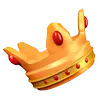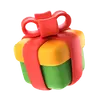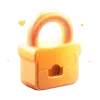Surfing Costa Rica
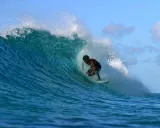
In one of my businesses, I get to meet a fair number or surfers from all over the world who have come here to test their skills. I will say ahead of time that I am NOT a surfer, so these descriptions as given to me by these people are pretty much as I wrote them down… and frankly, some of what they said just does not make sense. However, if you are a surfer… my guess is you’ll figure it out!
By the way, Costa Rica has a number of excellent surf camps and schools for those wishing to learn this great sport. Check the Internet for locations and prices.
Don’t surf? Just learning to surf… or want to? See our list of surf schools.
Best surfing locations in Costa Rica
These are not in any particular order:
Playa Dominical and Playa Hermosa –
This has become the most popular location over the past year or so has work gets spread. It is really good with a lot of heavy waves. It is also perhaps the most dangerous with a nasty undertow that can hold you under for a loooong time. This is the location for tubes. Playa Hermosa is MUCH bigger and heavier. Most excellent and can be one of the best spots in the country… but you can break your board here in an instant! Most people I speak to brought 2-3 boards.
Playa Tamarindo –
Tamarindo easily gets the most press… everyone who comes here makes the pilgrimage.
The beach faces north, and because the North waves generally appear more in the winter, that’s the best time to come. Just North are Playa Grande and Playa Langosta which are also good but have less people.
The problem is that Tam is always crowed and lately has become the drug center for Costa Rica. Crime is up too. Still, you can’t come to Costa Rica without hitting Tamarindo.
Polution issues are an issue with hotels punping raw sewage into the ocean. The government IS cracking dow.
Manuel Antonio – Central Pacific Coast
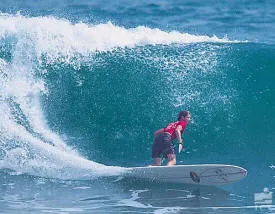
Really famous and really boring (for surfers). Give it a pass. Besides, recently there are issues of polution.
Playa Nosara – Northwest Pacific
Underrated! Waves go left and right and has a lot of swell. Do this one if you have time.
Caribbean Coast – Salsa Brava.
This is located near Puerto Viejo de Talamaca on the Caribbean side of Costa Rica. Brava in Spanish means ANGRY… get it? The bottom is reef and the breaks are truly horrendous. The local boys and girls are ASTONISHINGLY GOOD and have no patience for slow children, so be respectful! This beach is truly dangerous… so don’t even THINK about surfing this place unless you are top rated… and by top rated, we are not talking about what your mommy, your girlfriend (or you) say you are.
Pavones – South Pacific
The place that started it all. A long stretch of land just north of Panama on the Pacific side… hard to reach but worth it IF the Souths are coming. If they are, these are the longest and fastest waves anywhere, and they ARE fast! The only way to know if the South swells are up (or coming) is the Internet. Sleeper if not.
Playa Jacó – Central Pacific
The closest spot to San José (less than 2 hours) so you gat a lot of locals down for the day. It is a reasonably good break and great if you just don’t have time to go elsewhere.
Malpais –
Mal Pais means bad country. Not at all. This thing covers the long beach area from Mal Pais to Santa Teresa. It’s huge and even when it is crowded you can find a good one. Something for everyone every time. Recommended.
Updates!
I am always happy to add first hand reports of any of these beaches or to add new ones. Email me here This is by no means a comprehensive list, so do your homework by Internet to see what’s good.
Here is a helpful article submitted by CR Surf (www.crsurf.com) that provides a lot of helpful information about surfing Costa Rica.
Surfing – A Summary of Where and When to Go
Surfing started here in the 70’s when pioneers from California, Australia, and Europe found empty beachbreaks, points, and reef breaks. They told their friends, set up camp, taught the locals to surf and make boards, and the rest is history.
There are four major areas for surfing- North Pacific, Central Pacific, South Pacific, and Caribbean Coast. The seasons in the Pacific are rainy (from May until November) and dry (from December to April) while the Caribbean can have rainstorms all year. The tides are strongest just after a new or full moon.
In the North Pacific, there are boat trips to Ollie’s Point, a fast right breaking into a pristine bay. Witches’ Rock has miles of long white sand beachbreak with a nearby rivermouth. Farther south is Playa Grande, another beachbreak, and Tamarindo – with a fast tubing section at the rivermouth. Then just south is Langosta, Avellanas, Playa Negra (a favorite and at times very crowded right, barreling over a shallow rock shelf). Some surfers choose Playa Nosara, another hour south, with tropical beachfront with empty lineups. There are hidden beaches farther north and south for the adventurous.
The Papagayo winds blow offshore in this region between January and April. You have to time it with a swell, which is hit or miss, but they groom out barrels and long rides. May to November are also good months as southern swells light up the south facing beaches.
In the central pacific region waves can be found year round. The most consistent beachbreaks are Mal Pais, Playa Hermosa, and Dominical. There are also nearby point breaks, and Boca Barranca (near Puntarenas), is a left that goes 700 meters+ with a good south swell.
If you time it right, the southern zone has some of the most perfect waves on the planet. The two favorites are Playa Pavones and Playa Matapalo. Pavones can break 2-3 times overhead and have rides a half mile. Matapalo, on the other side of the Golfo Dulce, is a right point break that has house sized waves and picks up a west swell. Playa Zancudo is a nice beachbreak to visit and Drake’s Bay has access from Sierpe by boat.
On the Caribbean, the time to go is between January and April. To the north Tortuguero’s rivermouths are unsurfed and shark infested. The first fast barreling wave is at Playa Bonita, north of Limon. There are beach breaks south from Limon to Cahuita, but watch for sharks. Cahuita has nice white and black sand beaches. The jewel of this coast is the reef break Salsa Brava, the hollowest wave in Costa Rica. Farther south is Playa Cocles. And towards the Panama border are lesser known reefs and pointbreaks to go discover.
All of the popular beaches have access to board rentals and surf lessons. Rentals – $10-20 per day, $30-50 for a lesson. New boards go for $360-450. Don’t forget to get rashguard, sunscreen, and wax! Chosita del Surf in Jaco – 2643-3844, has high quality surfboards and products.
Email this page to a friend





